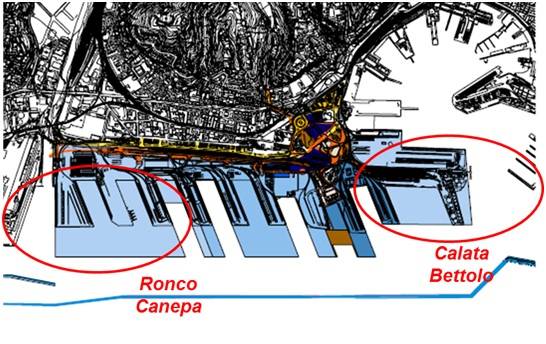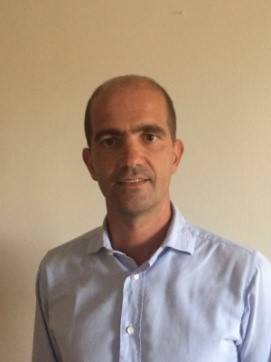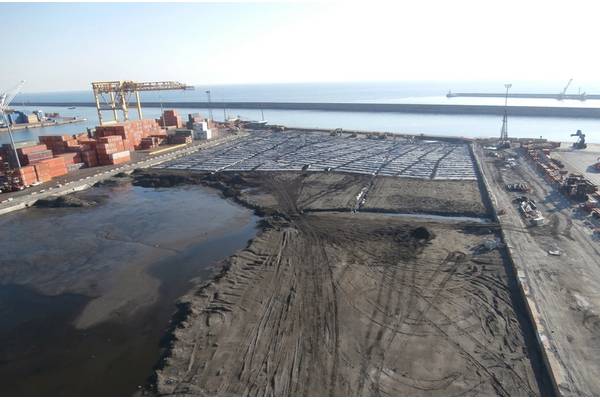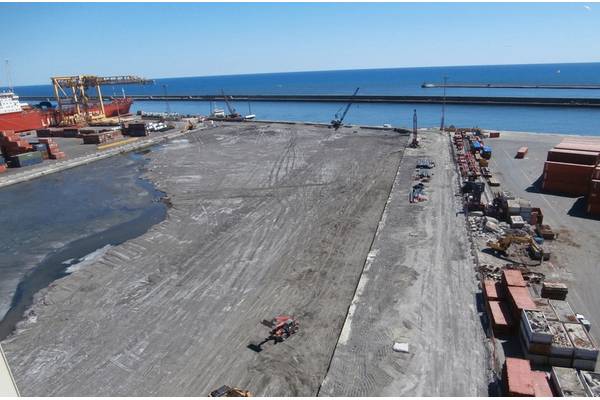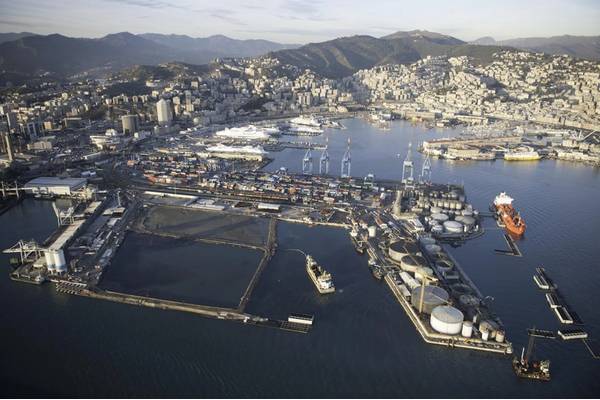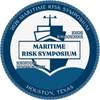Embracing responsibility in urban planning, infrastructure upgrade and marine environmental protection – an Italian case study with Genoa Port Authority
This article is a reflection of presentation delivered by Marco Vaccari, Portfolio & Project Manager, Genoa Port Authority (Italy) at 7th Dredging & Land Reclamation Asia Summit 2017 (organized by Equip Global, Singapore); co-contributed by Tony Tran.
Marco Vaccari is a Portfolio & Project Manager in the Technical Department of the Genoa Port Authority (Italy). Born, raised and spent most of his career in the port city, Marco has devoted the past 15 years for the implementation of around 20 projects within the port, ranging from €500,000 up to €50 million, including the creation of new container terminals, dredging works and new berths. The wide variety of roles and positions covered up to now has allowed him to gain all-round expertise in the management of the construction industry with both international private companies and public authorities.
The Port of Genoa is one of the major Italian seaports in the Mediterranean. With a trade volume of 50 million metric tons and 2-million TEUs, it is the busiest port of Italy by cargo tonnage. Genoa Port covers an area of about 700 hectares of land stretching along the coastline, with 47 km of maritime ways and 30 km of operative quays. Here container terminals, cohabit with cruise, ro-ro, chemical and oil terminals. Dry-docks and industrial area have to share the space with the marina and the airport. As the port and the city coexist naturally on the same stretch of coast, a large part of the working port coastline shares the function of urban waterfront.
The 7th Dredging & Land Reclamation Asia Summit 2017 (organized by Equip Global, Singapore) provided an opportunity for Vaccari to introduce a case study about challenging experiences in the Port of Genoa construction and development with global counterparts operating ports, harbors and marine construction project developers. The case study submitted was about “Dredging & Land Reclamation in Development of Two New Container Terminals in Genoa Port - Challenges and Solutions”.
Genoa Port has been the subject of uninterrupted development since 2001 with two grand master plans. What are the goals and directions?
The first Port Master Plan was approved in 2001 based on the new Italian Law 84/94, where port authorities would assume new functions and primary roles in planning, infrastructure development in close collaboration and dialogue with the municipality and regional government. In this context, the Genoa Master Plan has foreseen the construction of two new container terminals in the commercial area: Calata Bettolo and Ronco Canepa.
Calata Bettolo is located in the Eastern part of the commercial area, characterized by a total area of about 300,000 m2, 750-meter-long berth, and water depth at 17m. The project involved dredging of about 2.5 million m3 in sand and rock and land reclamation of approximately 180,000 m2. Works had started in 2007 and today are completed.
Ronco Canepa located in the western part of the commercial area, characterized by total area of about 170,000 m2, 640m-long berth and water depth at 15m. The project involved river mouth maintenance dredging of about 1 million m3 of mainly sand and reclaiming a land area of about 65,000 m2. Works had started in 2009 and are still ongoing.
The most recent Port Master Plan, developed in 2015, is a bold response to the need to identify a new model for port development, in collaboration with local government and the other public and private stakeholders, aimed at improving relations between the port and the city, which in Genoa live side by side.
Being the largest seaport in Italy and one of Europe’s busiest, with over 51 million metric tons of trade volume each year, the 2001 Genoa Port Master Plan must have invoked many challenges with construction and engineering methodology, potential damage to environment, disruption to transhipment?
As a matter of fact, the two different projects (Calata Bettolo and Ronco Canepa) faced the same challenges and constraints with regards to dredging and land reclamation issues. These challenges have been managed throughout all project phases, from planning and design phase until delivering.
Challenges were first connected to the port’s positioning, due to its intimate proximity with the city. Being adjacent to the airport also imposes severe constraints even during construction phases. The Genoa port also poses a complex reality, due to the different commercial interests and multiple operators and stakeholders.
Firstly, it was necessary to guarantee port and terminal operations along the entrance and the main channel during the construction phases. Therefore, dredging activity was regulated in close connection with harbormasters and according the availability of areas to dredge. This constraint had to be managed in advance, both across the detailed design and within the contract, so as to avoid claims from the general contractor.
The variety of areas extension and materials to dredge also meant employment of different types of dredging equipment that had to be deeply analyzed in advance. From for the environmental point of view the Italian law on dredging and land reclamation (D. Lgs. N° 152/06) was very strict, making related works time-consuming. It was necessary to implement chemical analyses and characterization in advance for the entire port seabed in order to avoid dredging disruption and claims from the general contractor
In addition, due to proximity to the urban waterfront, during dredging operations it was necessary to maintain constant control the turbidity levels and find the best trade-off with marine equipment.
Finally dredging had to be performed in compliance with structural stability of existing structures, so the detailed design imposed the depth and distance from existing quays and berths.
Dredging was for maintenance purpose in both cases: in the Calata Bettolo project the huge dredging activity all along the channel and quays allowed the Port to accept bigger vessels, whereas in Ronco Canepa the huge dredging activity along a river estuary was beneficial to river safety conditions, reducing flooding risk upstream.
Last but not least, it was necessary to adhere to funding and time schedule.
The realization of these terminals using dredged materials instead of quarry materials has been a money-saving but time-consuming solution. Moreover, this solution imposed some technical and environmental constraints that had been managed both in the construction phase and in the delivering phase.
What have been the outcomes of the projects and lessons learned?
At the time being one of the projects is in the delivering phase, while the other is close to completion. Main outcomes are as follows:
Benefits:
- Financial benefit: Large maintenance works at port authority usually benefits from co-funding with local administration.
- Economic benefit: Employment of dredging materials instead of quarry materials for the realization of Terminals turned out to be a much more cost-effective solution. 3.5 million m3 of dredging material should have been discharged in an authorized landfill and this procedure would have been very expensive.
- Social benefit: Works have been performed at sea with state-of-the-art marine equipment and dredgers, so that environmental impact of dust and traffic did not affect the waterfront and the city.
Disadvantages:
- The combination of risk mitigation solutions connected with dredging operations and time-consuming activities on consolidation of dredged materials (compared to the employment of quarry materials otherwise) increased the time required for projects delivery.
- Due to large volume of dredging material and strict environmental requirements of Italian law, technical constraints had to be faced and managed during the delivering phase of the Terminal. As an example, once project has been delivered, the port operator may plan to build on his own a structure with foundations on land reclamation just realized. Then the material excavated from the body of the reclamation must be handled and disposed accordingly to the strict environmental regulations given by the Italian law.
The bottom line is that the employment of dredged materials for the realization of terminals could lead to significant cost savings but it leads to much longer delivering time. Ship construction and naval giants evolve much faster than port infrastructure, so terminal requirements on vessel dimensions in 10 years had changed dramatically. To overcome this challenge, it is beneficial to overestimate vessel dimension (draft, width and LOA) at the design phase.
The 7th Dredging & Land Reclamation Asia Summit 2017 took place between August 1-4 in Singapore and was the major regional conference congregating major project owners and developers, mainly operators and authorities of ports, harbors, airports, land development. Participating organizations and projects included Port of Tanjung Pelepas, Pelindo II, Kuala Tanjung Port Project, Angkasa Pura, AECOM Hong Kong, Dredge Masters Ltd (Ghana), MG Consultants (Sri Lanka), Port Authority of Thailand, Port Authority of Busan, Port of Osaka, OVAM (Belgium), etc. The conference was chaired by Mr. Phil Wardale, Project Director, Tauranga City Council and Tony Tran, Equip Global. The speakers and delegates at the conference discussed challenges, policies and practices in materials beneficial reuses, project execution strategies, feasibility studies, environmental impacts, dispute resolution, equipment maintenance, ground improvement, etc.
